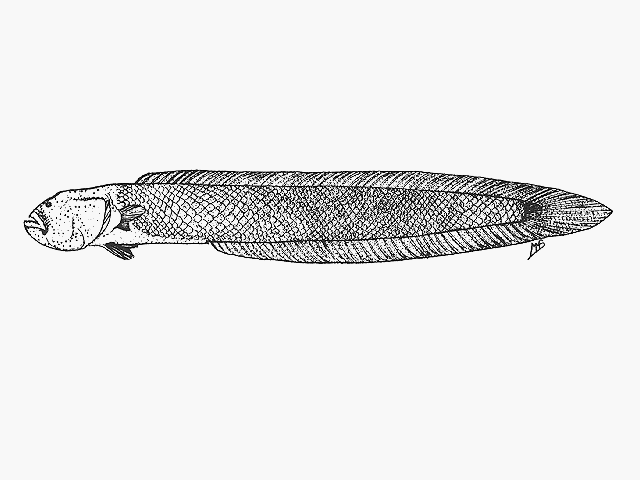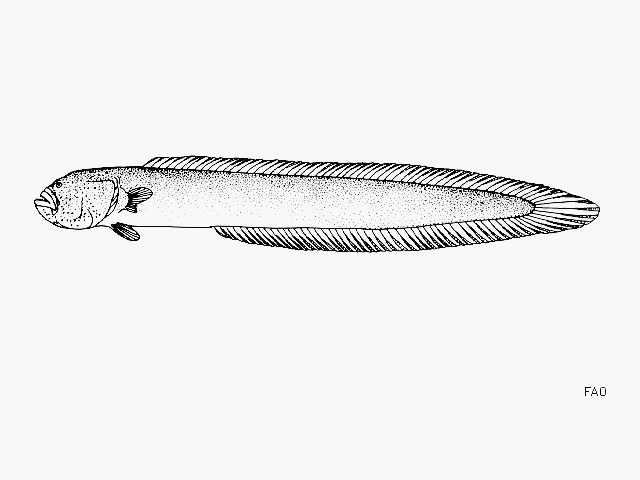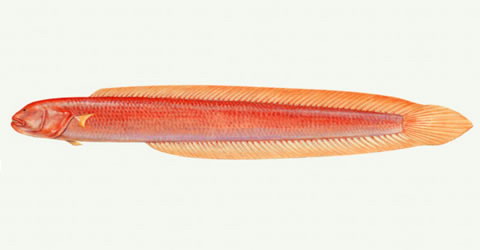Paratrypauchen
microcephalus
(Bleeker,
1860)
Comb goby
View all media / Upload your photos and videos
Expand all
Classification / Names
Teleostei (teleosts) > Gobiiformes (Gobies) >
Gobiidae (Gobies)
> Amblyopinae
Etymology: Paratrypauchen: The generic name is derived from the Greek Para, meaning beside or near, alluding to the similarity with Trypauchen. The gender is masculine.
More on author:
Bleeker.
Environment / milieu / depth range / climate zone / distribution range
Marine; brackish; demersal; depth range 0 - 10 m (Ref. 86942); tropical.
Distribution
Maps

Paratrypauchen microcephalus / Native range
AquaMaps Data sources:
GBIF
OBIS
This map was computer-generated and has not yet been reviewed.

Paratrypauchen microcephalus / Suitable habitat
AquaMaps Data sources:
GBIF
OBIS
This map was computer-generated and has not yet been reviewed.

Paratrypauchen microcephalus / Point map
AquaMaps Data sources:
GBIF
OBIS
This map was computer-generated and has not yet been reviewed.

Paratrypauchen microcephalus / Year 2050
AquaMaps Data sources:
GBIF
OBIS
This map was computer-generated and has not yet been reviewed.
Size / Weight / Age
Max length: 18.0 cm TL male/unsexed (Ref. 4343).
Short description
Biology
Main reference
Maugé, L.A. 1986 Gobiidae. p. 358-388. In J. Daget, J.-P. Gosse and D.F.E. Thys van den Audenaerde (eds.) Check-list of the freshwater fishes of Africa (CLOFFA). ISNB, Brussels; MRAC, Tervuren; and ORSTOM, Paris. Vol. 2. (Ref. 4343)
IUCN Red List Status (Ref. 125652)
Least Concern (LC); date assessed: March 12 2015
CITES (Ref. 123416)
Not Evaluated
CMS (Ref. 116361)
Not Evaluated
Threat to humans
Harmless
More information
- Countries
- FAO areas
- Ecosystems
- Occurrences
- Introductions
- Stocks
- Ecology
- Diet
- Food items
- Food consumption
- Ration
- Common names
- Synonyms
- Metabolism
- Predators
- Ecotoxicology
- Reproduction
- Maturity
- Spawning
- Spawning aggregation
- Fecundity
- Eggs
- Egg development
- Age/Size
- Growth
- Length-weight
- Length-length
- Length-frequencies
- Morphometrics
- Morphology
- Larvae
- Larval dynamics
- Recruitment
- Abundance
- References
- Aquaculture
- Aquaculture profile
- Strains
- Genetics
- Allele frequencies
- Heritability
- Diseases
- Processing
- Mass conversion
- Vision
- Pictures
- Stamps, Coins Misc.
- Sounds
- Ciguatera
- Speed
- Swim. type
- Gill area
- Otoliths
- Brains
Estimates based on models
Preferred temperature (Ref. 123201): 23.6 - 29.2, mean 28.4 °C (based on 2768 cells).
Phylogenetic diversity index (Ref. 82804): PD50 = 1 [Uniqueness, from 0.5 = low to 2.0 = high].
Bayesian length-weight: a=0.00417 (0.00263 - 0.00661), b=2.90 (2.77 - 3.03), in cm total length, based on LWR estimates for this species & (Sub)family-body (Ref. 93245).
Trophic level (Ref. 69278): 3.7 ±0.4 se; Based on size and trophs of closest relatives.
Resilience (Ref. 120179): Medium, minimum population doubling time 1.4 - 4.4 years (Preliminary K or Fecundity.).
Fishing vulnerability (Ref. 59153): Low vulnerability (10 of 100).
Price category (Ref. 80766): Very high; Very questionable: based on ex-vessel price for species in this family.
Nutrients (Ref. 124155): Calcium = 0 [0, 0] mg/100g; Iron = 0 [0, 0] mg/100g; Protein = 0 [0, 0] %; Omega3 = 0 [0, 0] g/100g; Selenium = 0 [0, 0] μg/100g; VitaminA = 0 [0, 0] μg/100g; Zinc = 0 [0, 0] mg/100g (wet weight);






